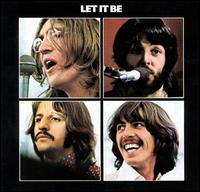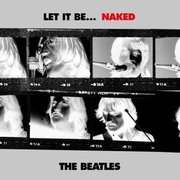The Long and Winding Road
|
|
| "The Long and Winding Road" | ||
|---|---|---|
| Missing image Beatles-singles-the-long-and-winding-road-1.jpg | ||
| Single by The Beatles | ||
| From the album Let It Be | ||
| Single Released | 11 May, 1970 (USA) | |
| Single Format | vinyl record (7") | |
| Recorded | January 1969 | |
| Genre | Pop ballad | |
| Song Length | 3:37 (original album) 3:34 (Naked version) | |
| Record label | Food / EMI | |
| Producer | Phil Spector | |
| Chart positions | 1 (USA) | |
| The Beatles single chronology | ||
| "Get Back" 1970 | "The Long and Winding Road" 1970 (USA) | "Back in the USSR" 1976 |
"The Long and Winding Road" is a pop ballad written by Paul McCartney that originally appeared on the Beatles' album Let It Be. It became The Beatles' last Number 1 song in the United States on June 13, 1970. While the released version of the song was very successful, the post-production modifications to the song by producer Phil Spector angered McCartney to the point that when he made his case in court for breaking up the Beatles as a legal entity, he cited the treatment of "The Long and Winding Road" as one of six reasons for doing so.
| Contents |
Innocent inspiration
McCartney originally wrote the song at his farm in Scotland, inspired by the growing tension between the Beatles at the time. McCartney said later: "I just sat down at my piano in Scotland, started playing and came up with that song, imagining it was going to be done by someone like Ray Charles. I have always found inspiration in the calm beauty of Scotland and again it proved the place where I found inspiration."
Although McCartney was the sole writer of the song, like all Beatles songs written by him or John Lennon, it would be credited to "Lennon/McCartney" by longstanding contractual agreement.
McCartney recorded a quick demo version of the song, with Beatles engineer Alan Brown assisting, sometime in September of 1968, during the recording sessions for The White Album.
The song takes the form of a piano-based ballad, with an unconventional structure and some of the most inventive and sophisticated chord changes heard in the Beatles' catalog. The song's home key is in E-flat, yet the song constantly attempts to upstage it with its relative minor, the key of C.
Lyrically, the song is a somewhat ambiguous evocation of an as-yet unrequited, though apparently inevitable, love. The "long and winding road" of the song is sometimes claimed to have been inspired by the B842, a thirty-one mile (50 km) winding road in Scotland, running along the east coast of Kintyre into Campbeltown, and part of the eighty-two mile (133km) drive from Lochgilphead. In an interview in 1994, McCartney described the lyric more obliquely: "It's rather a sad song. I like writing sad songs, it's a good bag to get into because you can actually acknowledge some deeper feelings of your own and put them in it. It's a good vehicle, it saves having to go to a psychiatrist … It's a sad song because it's all about the unattainable; the door you never quite reach. This is the road that you never get to the end of."
The song structure is equally sophisticated: while the opening theme is repeated throughout, the song lacks a traditional chorus, and the melody and lyrics are considerably ambiguous about the opening stanza's position in the song; it is unclear whether the song has just begun, is in the verse, or even is in the bridge. This ambiguity has been a characteristic of other Beatles songs, such as "She Loves You."
A turbulent recording session
The Beatles recorded "The Long and Winding Road" on January 26 and 31, 1969, with McCartney on piano and Lennon on bass guitar, during a series of sessions for an album project then known as Get Back. The original intent of the Get Back project was to make a simple, unadulterated document of the songs, but the band was often conflicted during the sessions and the results were generally ragged. McCartney claims that he did not plan on including the rough version of the song on Get Back; in particular he complained that Lennon, who was not a skilled bass player (McCartney himself was the band's usual bassist), had made many mistakes on the recording. Eventually the other Beatles, barely speaking to one another and disgruntled with the quality of their work, abandoned the Get Back project. Subsequently John Lennon and Beatles' accountant Allen Klein turned over the recordings to Phil Spector in the hope of salvaging an album, now titled Let It Be, out of the project.
Spector wrought various changes on the songs that would be included on Let It Be, but his most dramatic embellishment would occur on April 1, 1970, when he turned his attention to "The Long and Winding Road." At Abbey Road studios, he recorded the orchestral and choir accompaniment for the song. The only member of the Beatles present was Ringo Starr. Already known for his eccentric behavior in the studio, Spector was in a particular mood that day, as balance engineer Pete Brown recalled: "He wanted tape echo on everything, he had to take a different pill every half hour and had his bodyguard with him constantly. … He was on the point of throwing a wobbly, saying 'I want to hear this, I want to hear that. I must have this, I must have that.'" Brown and the orchestra eventually became so annoyed by Spector's behaviour that the orchestra refused to play any further, and at one point, Brown left for home, forcing Spector to telephone him and persuade him into coming back, after Starr told Spector to calm down.
Finally, Spector succeeded in remixing "The Long and Winding Road," using 18 violins, four violas, four cellos, three trumpets, three trombones, two guitars, and a choir of 14 women. The orchestra was scored and conducted by Richard Hewson, who would later work with McCartney on his album, Thrillington. This lush orchestral treatment was in direct contrast to the Beatles' stated intentions for a "real" recording when they began work on Get Back.

McCartney's fury
When McCartney first heard the Spector version of the song, he was outraged. Nine days after Spector overdubbed "The Long and Winding Road", McCartney announced that the Beatles were breaking up. On April 14 he sent a sharply worded letter to Apple records business manager Allen Klein demanding that the added instrumentation be reduced, the harp part eliminated, and that he should "never do it again." These requests went unheeded, and the Spector version went on to be included in the album.
In an interview published by the Evening Standard in two parts on April 22 and April 23, 1970, McCartney said: "The album was finished a year ago, but a few months ago American record producer Phil Spector was called in by John Lennon to tidy up some of the tracks. But a few weeks ago, I was sent a re-mixed version of my song 'The Long And Winding Road' with harps, horns, an orchestra, and a women's choir added. No one had asked me what I thought. I couldn't believe it."
McCartney asked Klein to formally dissolve the Beatles partnership, but was refused. Exasperated, he took the case to court, naming Klein and the other Beatles as defendants. Among the six reasons for dissolving the Beatles named by McCartney was that Klein's company, ABKCO, had caused "intolerable interference" by overdubbing "The Long and Winding Road" without consulting McCartney.
The end of an era
Spector claimed that his hand was forced into remixing "The Long and Winding Road" due to the poor quality of Lennon's bass playing. Others agreed: in his book Revolution In The Head Beatles scholar Ian MacDonald wrote: "The song was designed as a standard to be taken up by mainstream balladeers. … It features some atrocious bass-playing by Lennon, prodding clumsily around as if uncertain of the harmonies and making many comical mistakes. Lennon's crude bass playing on 'The Long and Winding Road,' though largely accidental, amounts to sabotage when presented as finished work." McCartney argued that Spector could have merely edited out the relevant mistakes and rerecorded them, a technique Spector used on the title track to Let It Be.
The controversy surrounding the song did not prevent a chart-topping single from being released in the United States on May 11, 1970, joined by "For You Blue" on the B-Side. The song entered the charts on 23 May, where it would remain for a further 10 weeks. On 13 June, it became the Beatles' 20th and final number one single in America, according to Billboard magazine. "The Long and Winding Road" brought the curtain down on the Beatles' six years of domination in America, beginning with "I Want To Hold Your Hand" in 1963.
A take of the song from the original recording session (from which the "final" Spector version was derived, but minus the orchestration and Spector overdubs) was included in the Anthology 3 release in 1996. This version included a bridge section spoken, rather than sung, by McCartney.

In 2003, McCartney released Let It Be... Naked, his own version of Let It Be. McCartney claimed that his longstanding dissatisfaction with the released version of "The Long and Winding Road" (and the entire Let It Be album) was the catalyst for his decision. The album included a version of "The Long and Winding Road" closer to McCartney's original intention: as with the Anthology version, it included no strings or other added instrumentation, but this particular mix had Lennon's bass part repaired.
Ringo Starr was himself impressed with the Naked version of the song: "'The Long And Winding Road' blew me away without the strings. There’s nothing wrong with Phil's strings, this is just a different attitude to listening. But it's been 30-odd years since I've heard it without all that and it just blew me away."
References
- The Beatles Official Website (http://www.beatles.com/html/thelongandwindingroad/index.html). Retrieved Sept. 11, 2004.
- The Beatles Ultimate Experience (http://www.geocities.com/~beatleboy1/dba12let.html). Retrieved Sept. 11, 2004.
- Brown, P. & Gaines, S. (1983). Love You Make, The : An Insider’s Story of The Beatles. McGraw-Hill Book Company.
- Marck, J. I Am The Beatles (http://www.iamthebeatles.com/article1211.html). Retrieved Sept. 11, 2004.
- Merritt, Mike. (Nov. 13, 2003). Truth behind ballad that split Beatles (http://www.sundayherald.com/38051). Sunday Herald.
- Ottawa Beatles Page (http://beatles.ncf.ca/timeline.html#70). Retrieved Sept. 11, 2004.
- beatles-discography.com (http://www.beatles-discography.com/beatles_songs_l.html). Retrieved Sept. 11, 2004.
- beatles-discography.com (http://www.beatles-discography.com/beatles_american_singles.html). Retrieved Sept. 11, 2004.
- beatles-discography.com (http://www.beatles-discography.com/1970.html). Retrieved Sept. 11, 2004.
- beatles-discography.com (http://www.beatles-discography.com/beatles-courtcase.html). Retrieved Sept. 11, 2004.
- Lewishon, Mark, The Complete Beatles Recording Sessions, Tamlyn, 1998
- ’’The Beatles Anthology’’, Chronicle, 2000
External links
- Song lyrics (http://frogcircus.org/beatles/let_it_be/the_long_and_winding_road)
- Alan W. Pollack's analysis of "The Long and Winding Road" (http://www.icce.rug.nl/~soundscapes/DATABASES/AWP/tlawr.html)

| Missing image Jk_beatles_paul.jpg Paul McCartney | The Beatles | 
| 
| ||
|---|---|---|---|---|---|---|
|
History of the Beatles | Long-term influence | British Invasion | Classic rock era | Paul is Dead rumours | Apple Records | George Martin | Geoff Emerick | Brian Epstein | Beatlesque | Discography | Bootlegs | Beatlemania | ||||||
